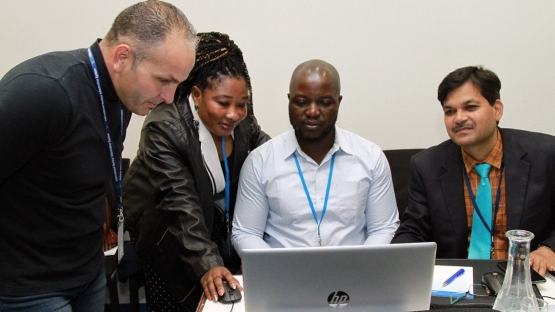Public awareness of developments in scientific research is crucial for building a more informed global society, and the IAEA is providing access to a trove of research on the peaceful uses of nuclear science and technology.
The IAEA’s International Nuclear Information System (INIS) is one of the world’s largest repositories of published research on the peaceful uses of nuclear science and technology, with more than 4.2 million bibliographic records and access to more than 1.6 million full-text documents. Each year, more than 1 million unique users perform around 2 million searches and download 3 million pages.
In line with the theme of this year’s World Science Day for Peace and Development—“Open Science, leaving no one behind”—on 10 November, INIS plays a vital role in providing open access to information and research.
“The IAEA has been an advocate of open access to knowledge since the inception of INIS in 1970,” said Dobrica Savic, Head of the Nuclear Information Section. All the documents, presentations and records are free of charge and accessible to anyone via the Internet.
Open science is defined by UNESCO as making scientific research and data accessible to all. It includes publishing open scientific research, promoting open access and making open source software available. Libraries and repositories are key for open science as many play an active role in the preservation, curation, publication and dissemination of digital scientific materials, according to the Organisation for Economic Co-operation and Development.
The INIS repository includes research on a wide range of nuclear-related topics, from environmental science and energy storage to radiology and many more. It’s made possible through an ongoing collaborative effort between the IAEA and experts from 132 countries and 24 international organizations. Member States submit peer-reviewed research from their country/organization to INIS, and approximately 120 000 bibliographic records and 13 000 full-text PDF documents are added each year.
To be sure, most publications are not for the lay reader. A quick glance turns up titles such as “Method and apparatus for the nondestructive assay of bulk nuclear fuel using 1 keV to Mev range neutrons” or “Regional comparison of nuclear and fossil electric power generation costs”. Many were once only available in hard copy but are now online after a massive effort to convert millions of microfiche pages to fully searchable electronic files.




